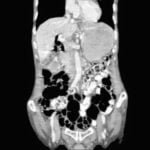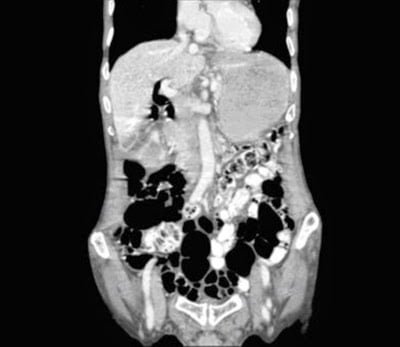Case Report: Adams Oliver Syndrome in a Neonate
Contributed by
Dr. Ghulam Nabi, MD,
Pediatric Consultant and Neonatologist at Bugshan Hospital, Jeddah, Saudi Arabia (drgnabi2@gmail.com).
Abstract:
This case report describes a late preterm male neonate diagnosed with Adams Oliver Syndrome (AOS). The patient presented with extensive skin defects, limb abnormalities, and other congenital anomalies. Despite intensive management, the neonate succumbed to cardiorespiratory arrest at eight days old. This report highlights the clinical features, management challenges, and the necessity for early diagnosis and intervention in AOS cases.
Introduction:
Adams Oliver Syndrome (AOS) is a rare congenital disorder characterized by aplasia cutis congenita (ACC) and transverse limb defects. First described by Adams and Oliver in 1945, the syndrome has an incidence of approximately 1 in 225,000 live births. This report presents the first documented case of AOS in a neonate from the Middle East, emphasizing the need for awareness and early diagnosis.
Case Presentation:
A late preterm male neonate was born at 34 weeks by dates and 35 weeks by ultrasonography.
- Antenatal History: The mother was a primigravida with a non-consanguineous marriage and had regular antenatal follow-ups. There was no history of hypertension or diabetes mellitus.
- Delivery: The baby was delivered vaginally with Apgar scores of 7 and 8 at 1 and 5 minutes, respectively.
- Anthropometrics: Weight: 1.59 kg (10th percentile), Length: 46 cm (50th percentile), Head circumference: 32.5 cm (50th percentile), small for gestational age.
- Clinical Features:
- Skin: Extensive partial skin peeling involving the scalp, face, neck, chest, abdomen, buttocks, and limbs, with visible veins beneath the peeled areas (Figures 1, 2, 3). Aplasia cutis congenita was noted.
- Ears: Low-set ears bilaterally, with microtia of the right ear.
- Limbs: Left lower limb transverse defect at mid-thigh with reduced soft tissue mass and left knee joint subluxation. Eversion of the right foot with restricted movements. Undescended testes.
- Cardiac: Patent ductus arteriosus, which closed with symptomatic treatment.
- Other Investigations: Normal ultrasonography of the brain and abdomen. Routine blood tests, chromosomal analysis, and cultures showed no abnormalities. Metabolic screening was not performed.
Management:
Due to the high risk associated with extensive skin defects, extraordinary precautions were taken to prevent loss of body fluids. These included minimal handling, aseptic precautions, and incubator care with optimal thermal and humid environments. The neonate received adequate intravenous fluids, nasogastric feeding, total parenteral nutrition, and full antibiotic coverage. Despite intensive management, the baby died at eight days old due to cardiorespiratory arrest.
Discussion:
The skin, being the largest organ, plays vital roles in barrier integrity, thermoregulation, and immunological defense. Newborn skin, particularly in preterm infants, is significantly thinner and less hydrated than adult skin, making it more susceptible to various complications.
Adams and Oliver initially described this syndrome in a family with eight affected members in 1945. AOS is characterized by areas of missing skin (ACC) and malformations of the limbs. Over 125 cases have been reported in the literature, with varying severity. The syndrome can present with scalp defects, limb malformations, heart defects, and neurological issues. Genetic mutations are implicated in AOS, which may be detectable prenatally via ultrasound.
Prognosis varies based on the severity of symptoms. Some cases may have excellent outcomes with surgical intervention, while others, as in our patient, may be lethal.
Conclusion:
This case underscores the importance of early recognition and comprehensive management of Adams Oliver Syndrome. Awareness among clinicians is crucial for improving outcomes in affected neonates.
References:
- Madhu R, Chandran V, Anandan V, et al. “Adams Oliver Syndrome: Case Report and Literature Review.” Indian Pediatrics. 2021;58(2):153-161.
- Iftikhar N, et al. “Adams-Oliver Syndrome: A Review of the Literature.” Journal of the College of Physicians and Surgeons Pakistan. 2014;24(S2).
- Jones KL, Jones MC, Campo MD. “Adams-Oliver Syndrome.” In: Smith’s Recognizable Patterns of Human Malformation. 7th ed. Philadelphia: Elsevier Saunders; 2013:416-417.
- Seo JK, et al. “A Case of Adams Oliver Syndrome.” Ann Dermatol. 2010;22(1):96-98.
Join the mailing list!
Get the latest articles delivered right to your inbox!




